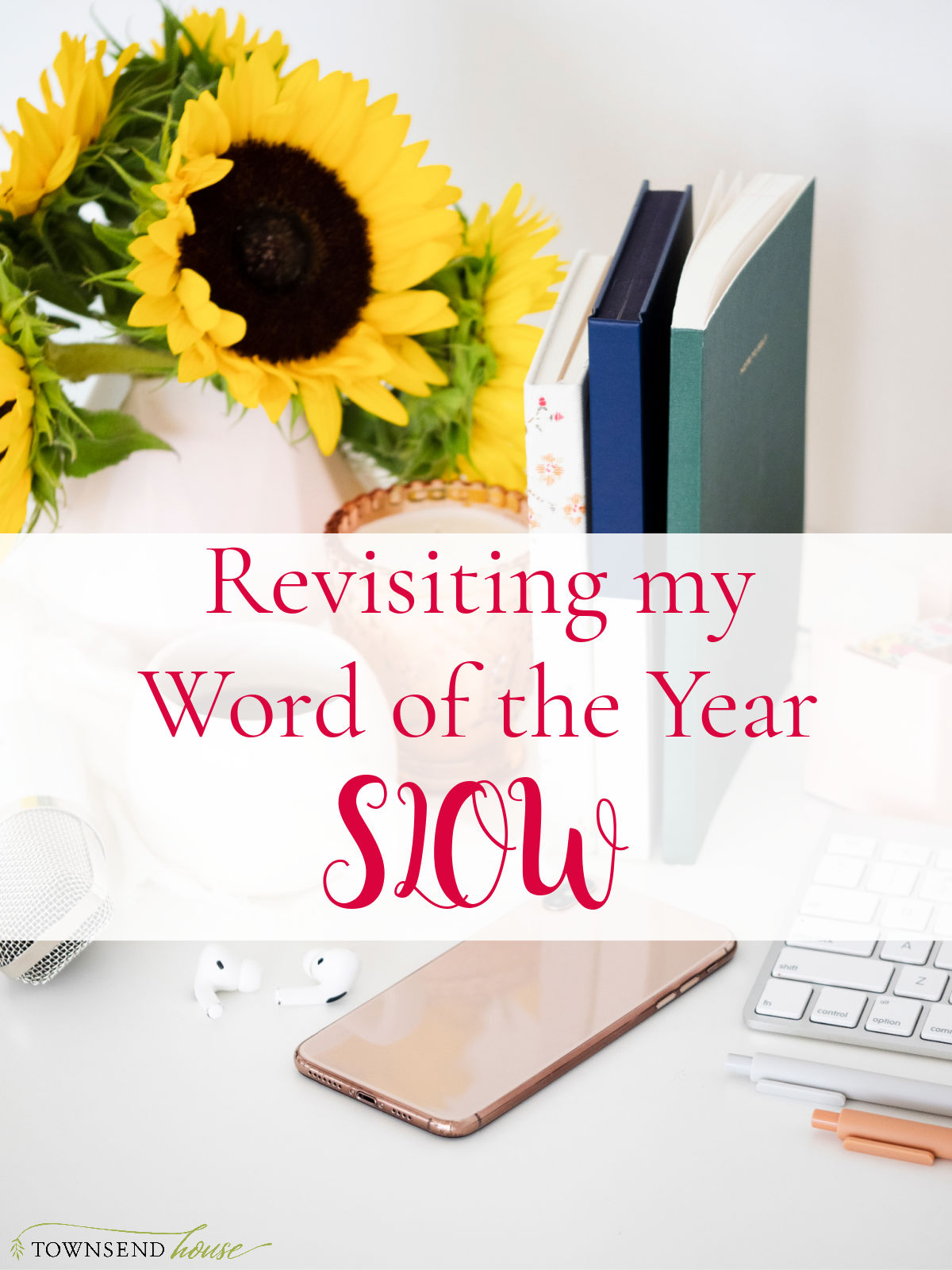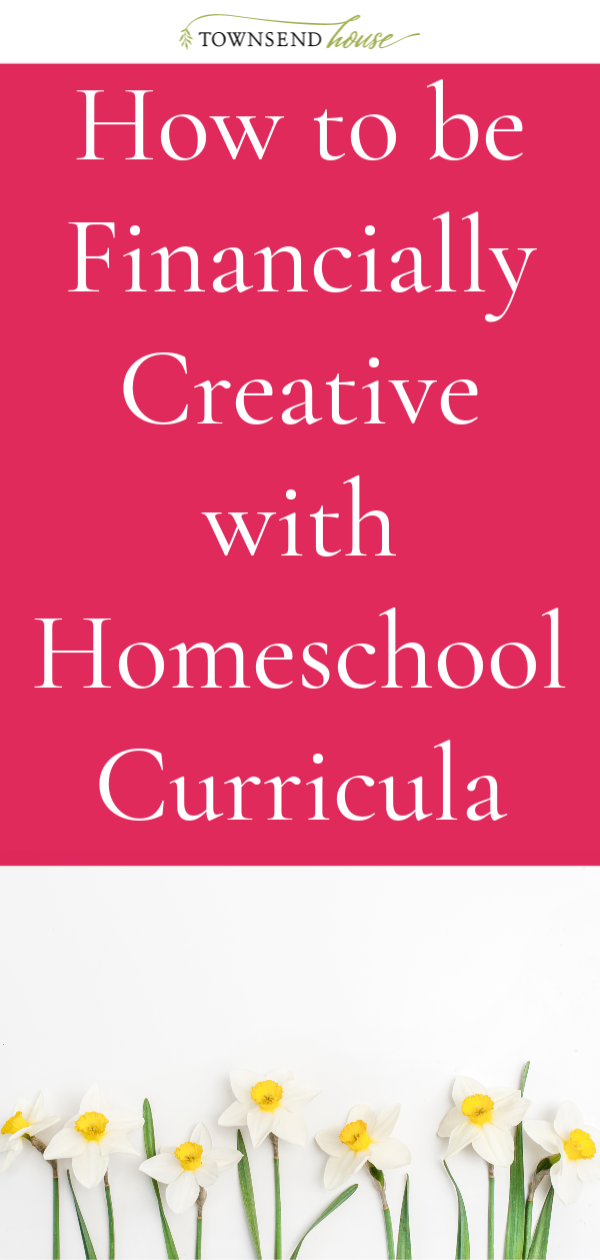How to Create an Inspiring Homeschool Environment
Creating an inspiring homeschool environment is one of those tasks in homeschooling that we all are striving for. We all want to inspire a love of learning. You want to make sure that your kids have the tools and space they need in order to encourage that love of learning. But, how do you create an inspiring homeschool environment? And how do you do it without completely losing your mind because there are piles of papers, art supplies, books, and projects all strewn about the house?
We all have unique housing situations. Some will allow us to have an entire room for homeschool. Others will not have a whole room option and may only be able to have a homeschooling cart. I know there is a comparison all around for these types of situations. But, you can create an inspiring homeschool environment no matter what your house situation is right now. Whether you are renting, or own a home. Whether you live in a tiny house or if you have a very large house. The strategy will be the same. It is how you interpret and use the strategy in your own home that will help you.
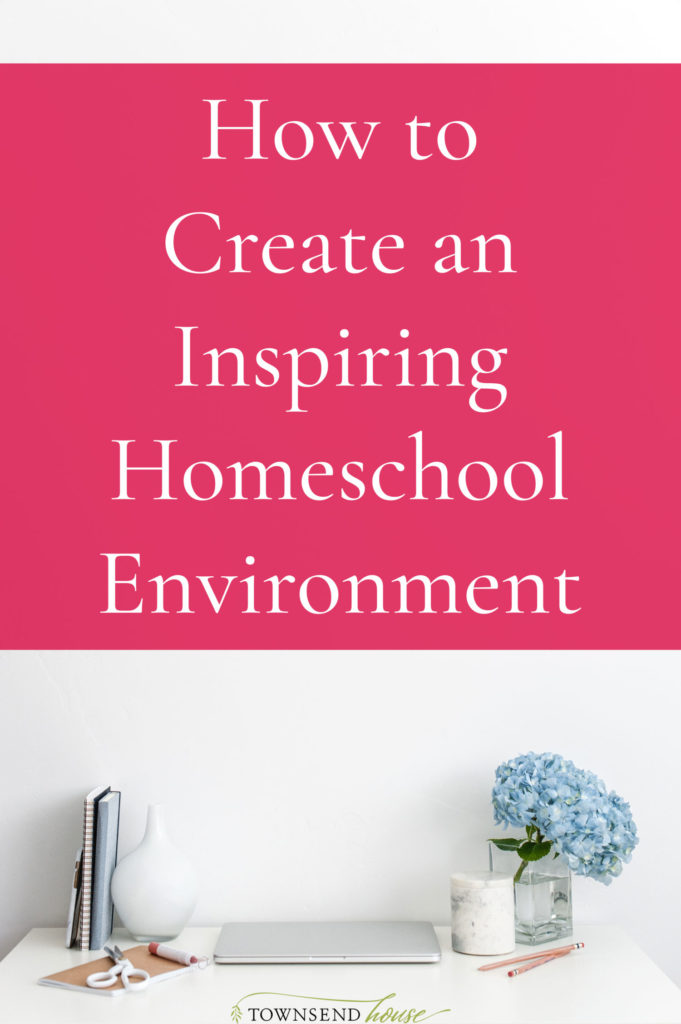
Inspiring Homeschool Environment – or not
I have had a love-hate relationship with my home since we moved into it 13 years ago. When we bought the house, it was definitely not our forever home. But, as the years have gone by, we are still here. There are a lot of issues with our house, storage being one of them. We have no closets, and that can be a bit of an issue when we are trying to store homeschool supplies. For a long time we were always in this pattern of not appreciating what we had, and not using it well while we had it. I wanted something better, something nicer, something more finished (we bought this baby as a fixer-upper…and it is still in that fixer-upper stage).
Why am I telling you all the ways we have not loved our home? Because that is the first step in creating an inspiring homeschool environment. You need to accept your home, your space. Now, if you are in the process of moving or trying to sell your home right at this moment, of course, it won’t be the same thing. However, I would say most of us are not trying to sell our homes in the moment. Instead, we may have these ideas of all the things we want to change in our home, but not sure where to start.
When I finally accepted our current home as a place that could inspire learning in my children; a place that could inspire my own learning, we immediately started to see improvements in the way we were viewing our home environment.
Don’t compare
Yes, it is easy to see all the beautiful pictures on instagram of homeschool rooms, of people doing amazing nature studies, of hikes in the mountains. Don’t let that fear of missing out come knocking at your door. It isn’t worth it. When you start to compare your own situation to images, or the best of what someone is showing you, it isn’t going to make your situation any better. Instead, you will become upset thinking your kids are not getting everything they need. Don’t let that fear take hold of you.
Instead, appreciate what others are doing, but don’t compare situations. No two families are the same. You have to decide what makes the most sense for you and your family. We love books in our home and we are filled to the brim with them, but if you don’t have room for books, get a library card instead! Just because I own a lot of books does not mean that you have to own a lot of books. In fact, one might say we own a few too many books (although I would still argue with them on that point!).
When you compare, you always end up being disappointed. Instead of that comparison, look for things that you may want to add to your own homeschool lifestyle, and if it fits, try it. If it doesn’t fit, don’t worry about it.
Homeschool Rooms
Isn’t it so nice when you look on Pinterest and see those beautiful homeschool rooms? They have everything set up so pretty, everything in its place. I can tell you that we have a homeschool room. I am constantly trying to keep it neat and tidy. It doesn’t always work. So we end up having to spring clean our homeschool more often than just spring. And that’s ok. At the end of the day we will clean up from what we were working on, but more often than not my kids will want to keep projects they have been working on out. This doesn’t always make a lovely neat and tidy homeschool room, but it does allow them to continue to work on the projects they have started when they feel led to do so.
A homeschool room is great if it is an option because everything can be centrally located. You know exactly where everything is, and if you need something you can find it.
We chose long ago to convert a room in our home into a homeschool room. It hasn’t been the same room every year, nope, I like to make it fun by moving furniture often based on my mood. That actually helps me to create an inspiring homeschool environment because I am willing to move things around and make changes when necessary. Not everyone has to move furniture in order to do that, but it is something that I enjoy.
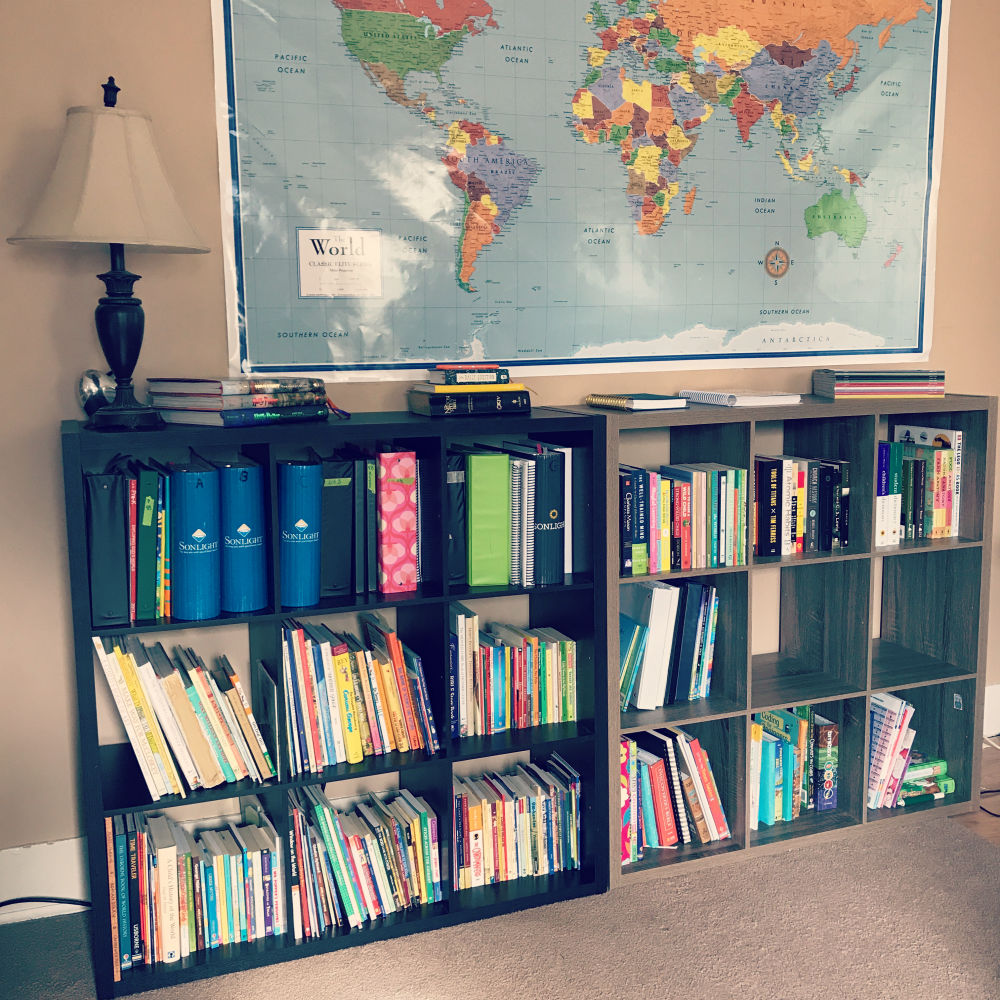
Books
I would be remiss if I didn’t mention books a few times in this post. I am a firm believer in surrounding our family with books. This doesn’t mean that you have to have a vast library in your home. Research suggests that having as few as 20 books in your home has a significant impact on the child’s ascent to higher level of learning (source). This is regardless of nationality, income status, or parent’s level of education. And this isn’t just homeschoolers, this is any child. What I am saying is that you should definitely have books in your home. But, it does not need to be a vast number of books. So say you own 20 books, because that is all you have the space for, and then you go to the library weekly to check out different books to encourage that growth in your child.
When we talked about old homeschool materials I discussed my ideas on book organization. We do separate our school books from other books in our home. This is only because we have extra shelving. If you need to keep all of your books together, that is absolutely OK. I would recommend some sort of labeling system if you have a lot of books, otherwise, when you are looking for a particular book you may not be able to find it. We are still perfecting our labeling system – once we have a handle on it I will share it with you!
Sign up for the Townsend House Community and receive tools and strategies to help you cultivate simplicity in your home & homeschool.
Project-Based Homeschooling
This post includes affiliate links. If you click on one of these links and make a subsequent purchase I may receive a commission. Read Disclosure.
Project-Based Homeschooling is an amazing way to foster an inspiring homeschool environment in your home. Your child finds something that interests them, and then you deep dive into that subject, providing supplies and support as your child works on that project. What that also means is that you need to have space for those supplies, they need to be accessible to your child, and most importantly the project needs to be kept out in the open. Why? So it is available whenever the child feels like they want to work on it.
Project supplies encompass a vast array of pieces. And most definitely art supplies would fall into this category. For example, my kids recently wrote an entire play based on the Creation story in the Bible. They also designed and made costumes (out of posterboard – you work with what you’ve got, and you’ve got skill for!), as well as props and set design. It was awesome! Something they did completely on their own. But, if we did not have the supplies they wanted to use, it would have been difficult to complete. And it took an entire day to really put everything together. The supplies were out, most of the day, and were not really cleaned up until the next day.
This is one of those areas where it can be difficult to let go of that need for neat and tidy. I do not like visual clutter, so this is something that is still difficult for me today, but I know the value in having the supplies available. I know the value in letting my kids complete a project on their own and giving them the tools they need to see their vision through.
Art Supplies
A note on art supplies. You do not need to give your kids access to glitter. I’m giving you permission right now. Just because glitter is fun, and it may create an inspiring learning environment, you don’t need to give it to them! I say this, half in jest, but also seriously. My kids have never had access to loose glitter. Instead, I would get them the glitter glue sticks. They could use those to create shiny accents on their artwork.
Why does this matter? Because when you are providing tools for your kids’ creativity, for their learning, you sometimes think you need to provide every tool and product available, but that isn’t the case. Instead, you should select what you want your kids to use carefully. What can they have access to without asking you? Are there art supplies that are open for use at any time? In our home, those are things like all different types of paper and glue, scissors, markers, crayons. These supplies are always available to them. Things that my older kids have access to that my youngest does not (she is 4 after all) are paints, oil pastels, watercolor pencils, and clay. Still, tools to use, and my 4-year-old is allowed to use them, but she needs help in getting them out.
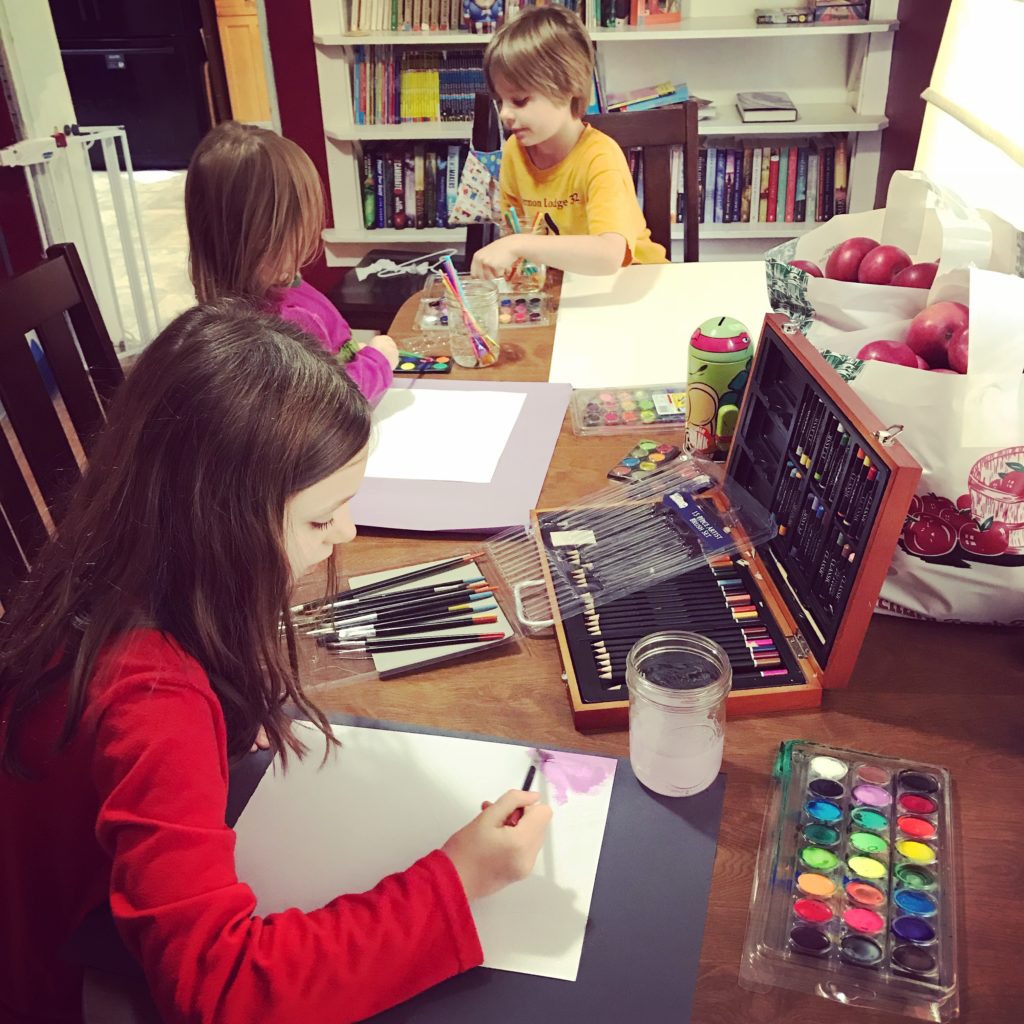
Dottie’s Art Table
With all the access to art supplies and project supplies, there needs to be a place for that stuff. If you have read The Brave Learner, you will know about Dottie’s Art Table. The author’s homeschooling friend Dottie would leave out all kinds of art supplies for her kids. Right in the middle of the living room. The kids would get messy and have a grand time creating the art they loved. Dottie allowed this in her home, and the author of The Brave Learner, Julie Bogart, was amazed that it was all happening right in the middle of the home.
Now, I loved the idea of Dottie’s art table. And there have been seasons where we have had that table as our dining room table. However, while it may have been an inspiring homeschool environment for my kids, it was not for me. So we moved things around, again, and provided space in their toy room for art and other projects. Still accessible, but not in my sightlines throughout the day.
Inspiring Homeschool Environment Strategy
So what exactly is the strategy for an inspiring homeschool environment? You may think that the strategy is to give your kids access to glitter in the middle of the living room because that is what your kid wants to do. That isn’t the strategy though. It isn’t to give your kids access to whatever they want when they want and hope for the best – because if you are like me that would be incredibly stressful. Instead, it is to have an open mind. You need to be open to the projects that your kids want to do, and they have to be respectful of the environment as a whole.
Your kids want to leave an art project (or any project) out so that they can work on it later, or because it is drying, or whatever reason, that is fine. However, there needs to be a designated place for that project. And then the caveat is that the supplies that are no longer being used need to be put away. This is teaching proper care of items. Often, I try to make sure my kids have good art supplies for what they are working on, because of that I don’t want them laying about the house so you can find them when they are needed.
Which Tools are Needed?
You need to make available the tools that you decide will be of best value to your kids. It also takes a bit of maturity and practice on your kids’ part in order to let them have free reign of those materials. While it is nice to have an art table in the middle of the house, available for anyone who comes in, it is also nice to have an art table tucked away in a room that you don’t see all the time. You will need to figure out where is the best place based on your individual needs.
Listening to your kids is a great way to figure out which tools are needed. You may think that they want glitter, but really want is a knife to whittle with. Talk to them. Ask them which tools they think are inspiring. What are the items that have been off limits? Are they interesting only because they are off limits?
Ask the Questions
Find out what exactly your child is interested in. How can you support that interest? How does that interest translate into your current homeschool? Are there adjustments that can be made so that your child can work on a project, or have space to work freely without feeling bad about making a mess? Remember when your kids were little? Or maybe they are little now. Did you let them jump in the puddles? Did you allow them to get messy? Most likely you did. You knew that you would be able to clean them up. That is the same attitude we need to have now when our kids are homeschooling. There will be a mess, but we can clean it up.
So ask your kids the questions. What is an inspiring homeschool environment to them? You may be surprised! Perhaps they really like neat and tidy but didn’t know how to go about it. My kids thrive when there is more white space. That includes white space on our art table. When the table is completely empty, my kids will work for hours on different projects, if it is full of artwork drying, they will not go near the table until it is empty again. Because I know this, we need to periodically go in and do a sweep of the craft area. Make sure that everything is organized again. It isn’t something I expect my kids to do on their own either, I participate with them because that is the only way they will learn.
The Bottom Line
In order to have an inspiring homeschool environment, you need to have a conversation. You need to be a clear communicator with your kids about your expectations. What are the things that inspire you? Explain that to your kids. If seeing a mess all the time is not inspiring, explain that to your kids. Let them know that the tidier they keep their workspace, the more accomplished you will be to come up with new ideas for their homeschool, for their learning.
If you are always stressed about your environment – it is too cluttered, there are too many things, there is no organization – you will have trouble conveying any type of learning to your kids. They will sense the stress. So work together, find out the best environment for your individual family. I talked a lot about projects and art supplies, but if your inspiration is a farm, or outdoors, make sure you have the tools for that. You will need the outside clothes, the muck boots, the hiking boots. Or maybe books. You want to fill your home with as many different books as possible. That is great! Or maybe it is all of the above.
Whatever tools that will make learning more fun, more engaging, make sure to have those. And then figure out the best way to keep track of those tools so they are available to your kids. Let them work on the projects, and then help them understand what can be put away at the end of working time.
If you are reading this and can’t seem to see through the trees at this point, go back and look at my posts on spring cleaning your homeschool, and what to do with old homeschool materials. Clear your space of the clutter so that you can see what is most important to your learning environment.
What projects are you excited about starting with your kids? Do you have an art or project table available in your homeschool?


